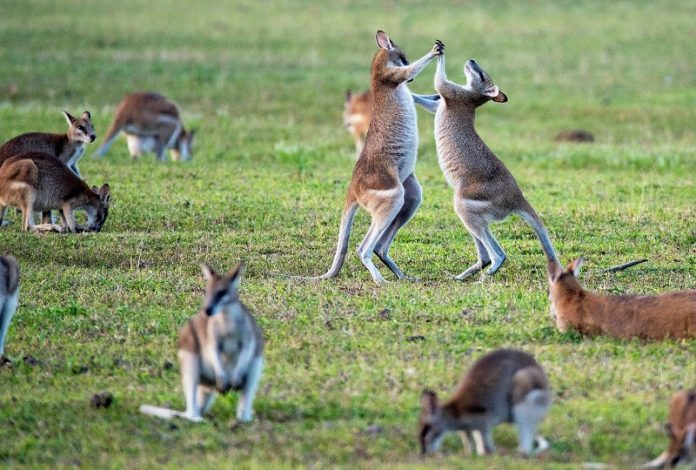
Have you ever wondered why certain animals can only be found in specific regions?
The Wallace Line is a fascinating invisible boundary that separates the wildlife of Bali and Lombok, as well as Borneo and Sulawesi.
Scientists have been captivated by the abrupt change in animal species along this line and have uncovered some intriguing clues to understand this phenomenon.
Around 45 million years ago, the Australian Plate began moving northwards, sliding beneath the Eurasian Plate and bringing these land masses closer together.
This movement made it easier for animals to migrate between the two continents.
Additionally, the creation of volcanic islands acted as stepping stones for animals and plants, facilitating their movement.
Surprisingly, more species migrated from Asia to Australia than the other way around. Researchers led by Professor Loïc Pellissier from ETH Zurich have developed a new model to shed light on this asymmetrical distribution.
By studying climate reconstructions, plate movements, and data on thousands of birds, mammals, reptiles, and amphibians, they have made significant progress in solving this puzzle.
In addition to plate tectonics, the climate of the past played a crucial role in shaping the distribution of animal species.
Simulations conducted by the researchers revealed that animals from Asia were more likely to migrate to New Guinea and northern Australia via the Indonesian islands.
These islands provided a tropical and humid climate, which was suitable for Asian fauna. On the other hand, Australian wildlife had evolved in cooler and increasingly drier conditions, making it less successful in colonizing the tropical islands.
Species originating from tropical habitats possess certain advantages, such as faster growth and higher competitiveness, which enable them to coexist with a wide variety of other species.
Organisms in harsher climates, like those in colder and drier regions of Australia, have developed special adaptations to cope with drought and heat stress.
Understanding these adaptations and considering the historical context is crucial for comprehending the distribution patterns of biodiversity today.
This research emphasizes the significance of considering geological development and past climatic conditions when studying present-day biodiversity.
It also helps us understand why there are more species in tropical regions compared to temperate latitudes.
Furthermore, studying ancient biodiversity patterns aids in managing the impact of invasive species, which humans often introduce to new habitats. By understanding the factors that influence species exchange over long time scales, we can better evaluate the consequences of human-induced invasions.
In conclusion, the Wallace Line offers a fascinating glimpse into the world of biodiversity. By examining the influence of plate tectonics, climate, and adaptations, scientists are gradually unraveling the secrets behind this remarkable boundary.
Understanding the historical context of species distribution helps us appreciate the intricate relationships between animals, plants, and their environments, ultimately contributing to the conservation and protection of our planet’s diverse ecosystems.
Follow us on Twitter for more articles about this topic.



